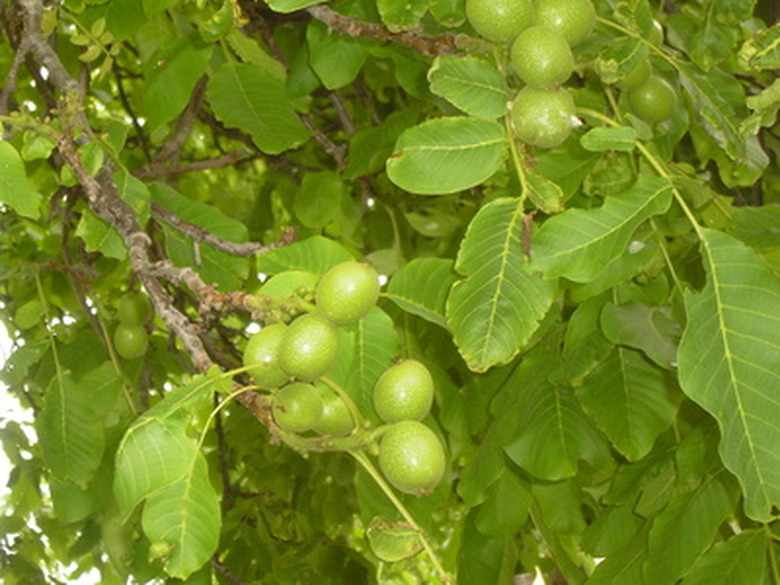Diseases Of Walnut Trees
Walnut trees (Juglans spp.) often drop their leaves prematurely due to bacterial or fungal diseases. Other symptoms of diseases on walnut trees include abnormal growth of foliage, damaged nuts and dead areas of bark. Most walnut tree diseases are not severe and do not cause permanent damage. Grow walnut trees in full sun in rich, moist soil. Plant them at least 60 to 80 feet away from other trees to prevent crowding, and prune regularly to provide good air circulation. Remove trimmings and other debris from around the tree and destroy it to prevent the spread of diseases.
- Walnut trees (Juglans spp.)
- Remove trimmings and other debris from around the tree and destroy it to prevent the spread of diseases.
Anthracnose
Anthracnose is a fungal disease of walnut trees that is more severe after a cool, wet spring or summer. Symptoms include black spots on the foliage and fruit husks, and shriveled nuts. The foliage may turn yellow and drop prematurely, but the disease in not fatal.
Bacterial Blight
Small irregular spots on the foliage, petioles, young shoots and nuts of walnut trees characterize bacterial blight. The husks, shells and nuts turn black, and may drop prematurely.
Black Walnut Decline
Black walnut decline is also called thousand canker disease because of the numerous oval cankers that form under the bark of infected trees. The upper crown produces little or no spring growth and the affected areas progress downward each year. Infected walnut trees usually die in two to five years. There are no chemical controls for black walnut decline, although hard pruning early in the disease may save the tree.
- Anthracnose is a fungal disease of walnut trees that is more severe after a cool, wet spring or summer.
- The foliage may turn yellow and drop prematurely, but the disease in not fatal.
Walnut Blight
Walnut blight causes small, water-soaked spots on the leaves, shoots, nuts and bark of walnut trees. The disease remains in the new growth and does not spread to the older growth. Infected nuts may not fill out properly. Apply copper fungicide for walnut blight according to the manufacturer's directions to control the disease.
Walnut Bunch Disease
Walnut bunch disease is characterized by "witch's broom"–abnormal bushy lateral shoots with undersized leaves. The witch's brooms normally begin growing earlier in the spring than the normal foliage, and continues growing later in the fall. Infected walnut trees will not produce a normal crop. Prune out the witch's brooms; if more appear, you must remove the tree.
- Walnut blight causes small, water-soaked spots on the leaves, shoots, nuts and bark of walnut trees.
- The witch's brooms normally begin growing earlier in the spring than the normal foliage, and continues growing later in the fall.
